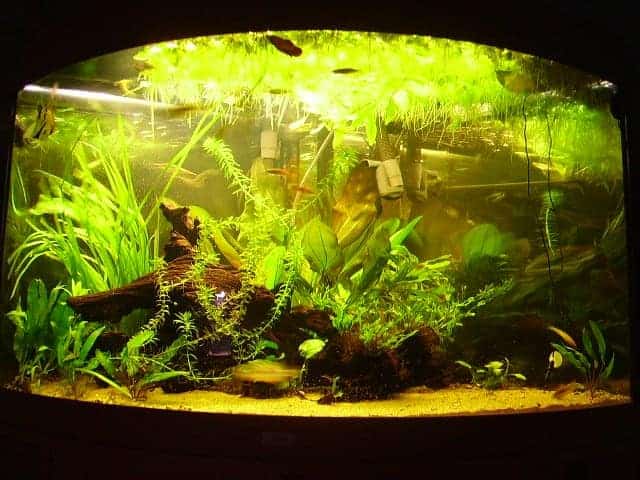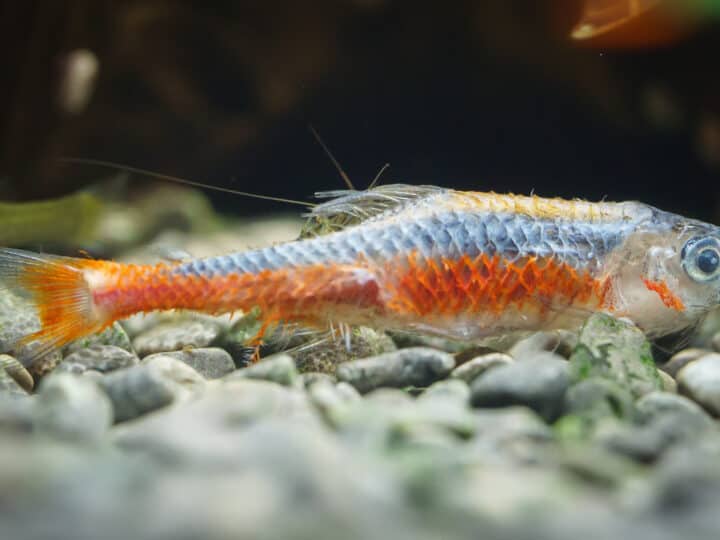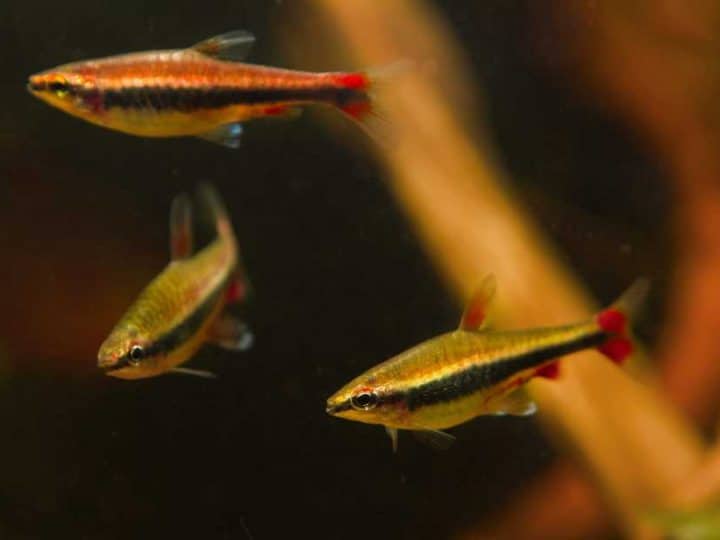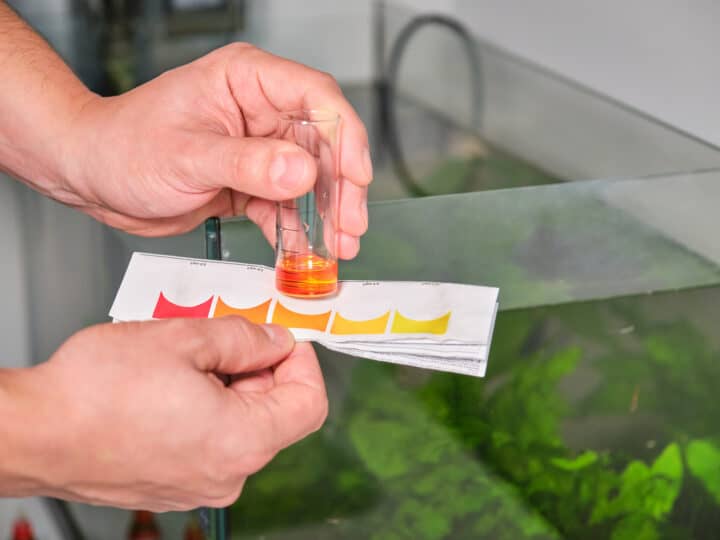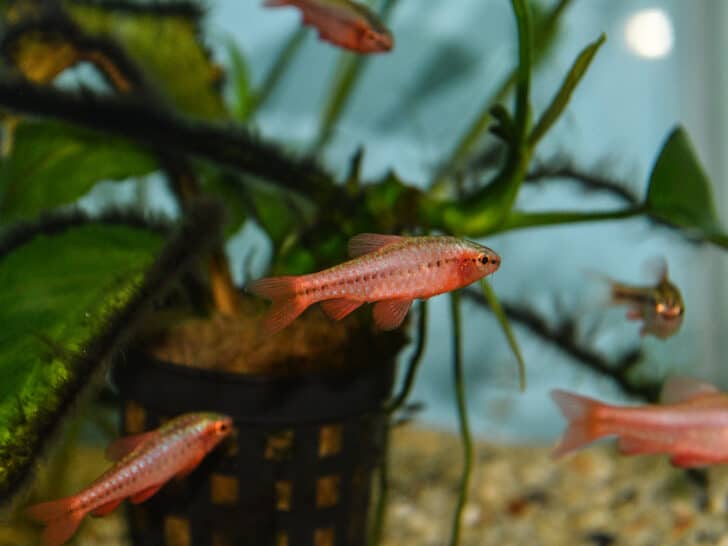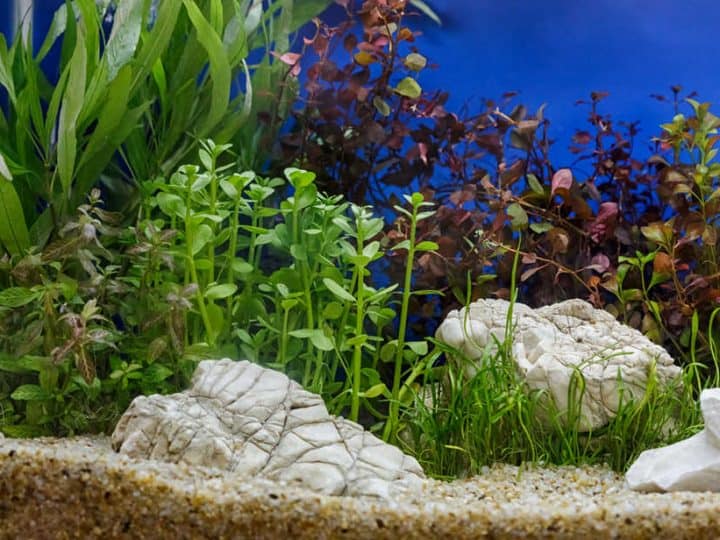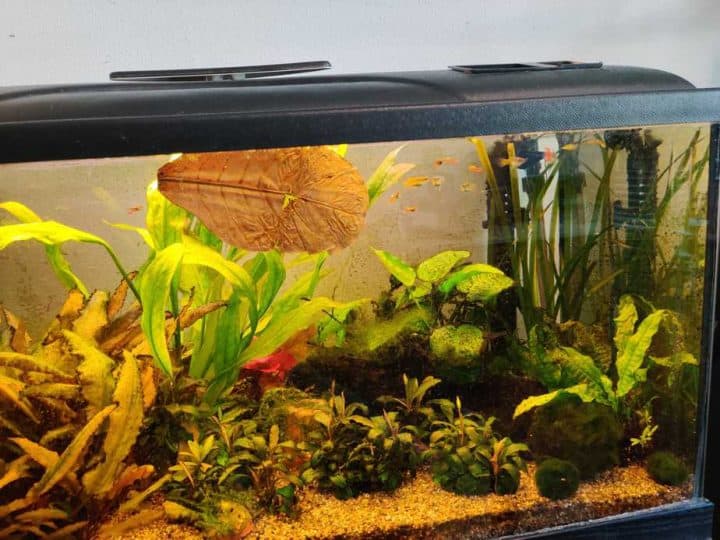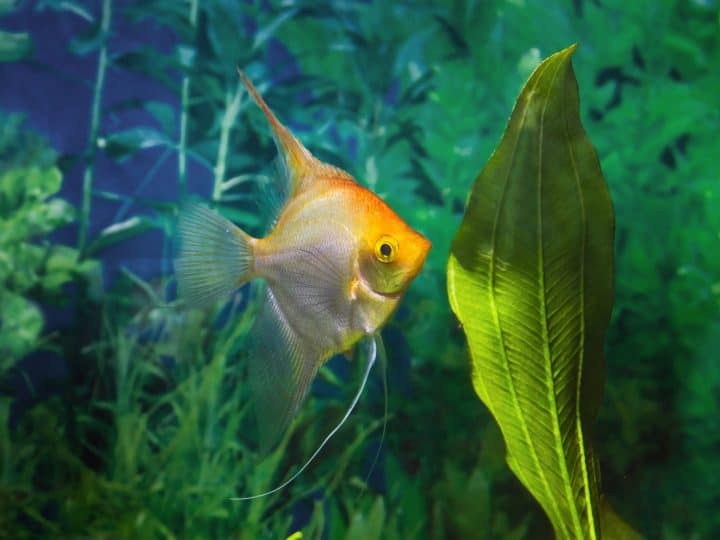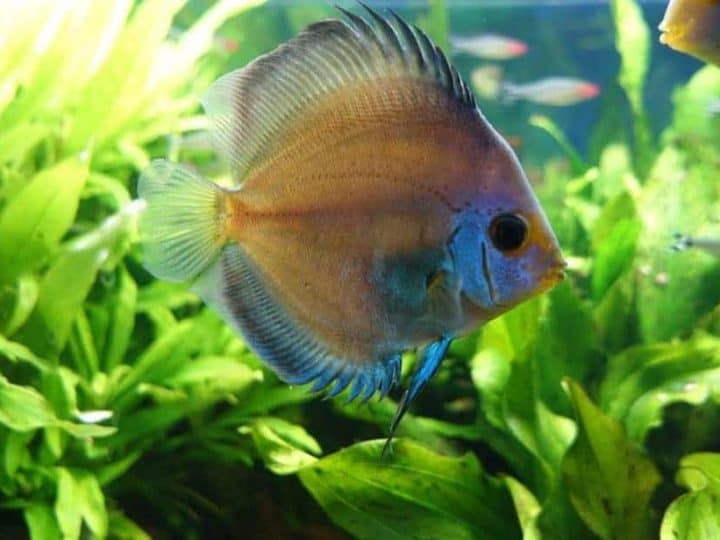Water changes are crucial for tank maintenance and health. This is true regardless of the type of tank you have. However, in a planted tank, changing your water is even more important. You want to keep your plants lush and growing well in their underwater environment.
This is only made possible when you regularly change the water in your aquarium. Of course, if you have had an aquarium, you probably know how to change your tank water. Still, with a planted tank, this task is a little different.
In this post, I will talk about everything you need to know regarding water changes in a planted tank. You want to remove at least 25% of your water each week. But, you might not know how to do this properly in a planted tank. So, I’ll show you how you can do this successfully in any planted aquarium!
Why Do You Need to Change Your Tank Water Regularly?
In a regular tank, water changes are performed in order to remove nitrates and waste from the water. Other debris and toxins are removed in a water change, as well. But nitrate removal is one of the main reasons people change their water.
Read more about ideal water parameters here.
To clarify, nitrate is the final product of the nitrogen cycle. It’s not dangerous to your fish in low concentrations. But, if you let it build up, it can create issues for your fish. So, tank owners change their water regularly to keep their tanks in top condition.
In a planted tank, though, water changes are performed for a different reason. You are still trying to balance out your tank’s water chemistry and keep it clean. But, plants actually get rid of nitrates in your water on their own. So, in truth, you can do fewer water changes.
However, there are other reasons you want to change the water in a planted tank often. In particular, this has to do with liquid fertilizer.
Why Are Weekly Water Changes Important For Planted Tanks?
In a planted tank, liquid fertilizer is often dosed in the water. This can happen anywhere from 2-3 times per week. Some people don’t like to use fertilizer, but I highly recommend dosing your tank with fertilizer regularly.
This will keep your tank full of nutrients for your plants and it will prevent algae growth. Still, these nutrients don’t stay in your tank forever. In fact, nutrients need to be replenished in your tank on a regular basis. This can only happen with a weekly water change, though!
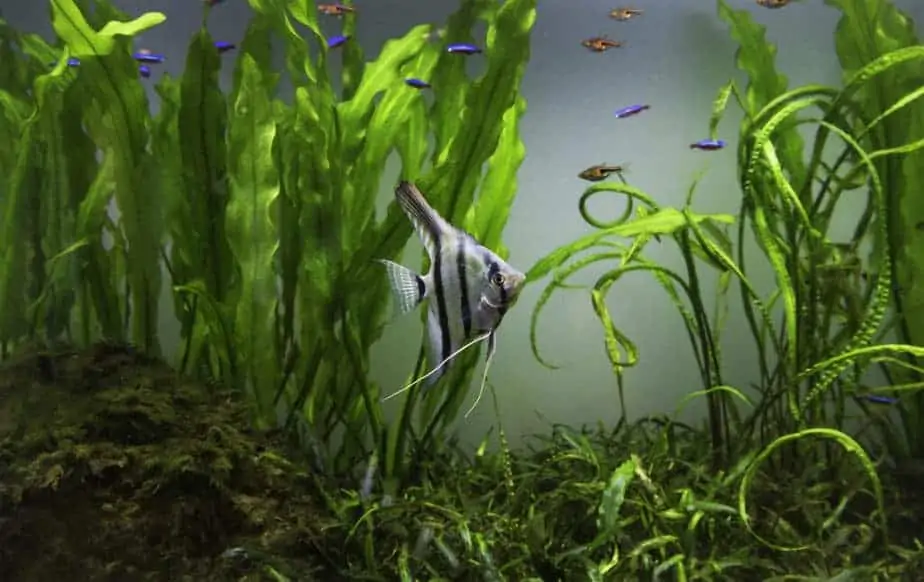
To sum everything up shortly, changing your planted tank water will help reset your tank’s nutrients. And, it will also get rid of built up toxins and plant waste in the water!
In other words, if you want to add in new nutrients to the water, your tank water has to be changed each week. This way your planted aquarium stays healthy and well fed.
How Do You Change Water in Your Planted Tank?
Knowing why your tank needs to be changed is important. However, you also want to understand how to change the water in your planted tank. Again, the process of changing the water in your planted tank is different from a normal tank. But, it is not too hard to change your tank water. You just want to be careful and diligent.
You can change 25% of the water but if you want to change a little bit more of the water, 30% is also a good number. This amount of water replacement will help get rid of more organic plant waste and help fill your tank with more nutrients from liquid fertilizer. As a result, algae overgrowth is less likely to occur.
Step by Step Guide for Planted Tank Water Changes:
Let’s go over how to perform a water change quickly and easily. There’re some parts of the maintenance that you just can not skip. Allow me to explain to you what steps to take.
1. Prepare Your Materials
To start the process of changing your water, begin by gathering any necessary items. You will need something to siphon out the water in your planted tank. And, you will need a bucket to put your old tank water in.
New water should also be prepared for your tank. This way you can refill your aquarium with more ease. Make sure the new water is at a similar temperature to your tank water. This way your plants and pets won’t be disturbed.
2. Start Taking Water Out of Your Planted Tank
Once everything is prepared, you can begin taking the water out of your planted tank. You can siphon the water with a simple tube yourself. Or, you can use a vacuum to help get the water out faster. Aquarium vacuums are particularly convenient.
They speed up the process of a water change and can be used to clean your tank. So, if you see any organic plant waste or debris, you can use your vacuum to take it out.
3. Do A Little Cleaning In Your Aquarium
Even if you don’t have an aquarium vacuum, you’ll want to do a little bit of cleaning in your planted tank. Nitrates don’t build up as easily in your planted tank, but other waste and plant material can build in the water, and this needs to be removed. Either suck up this waste or remove it with a net or other aquarium tool.
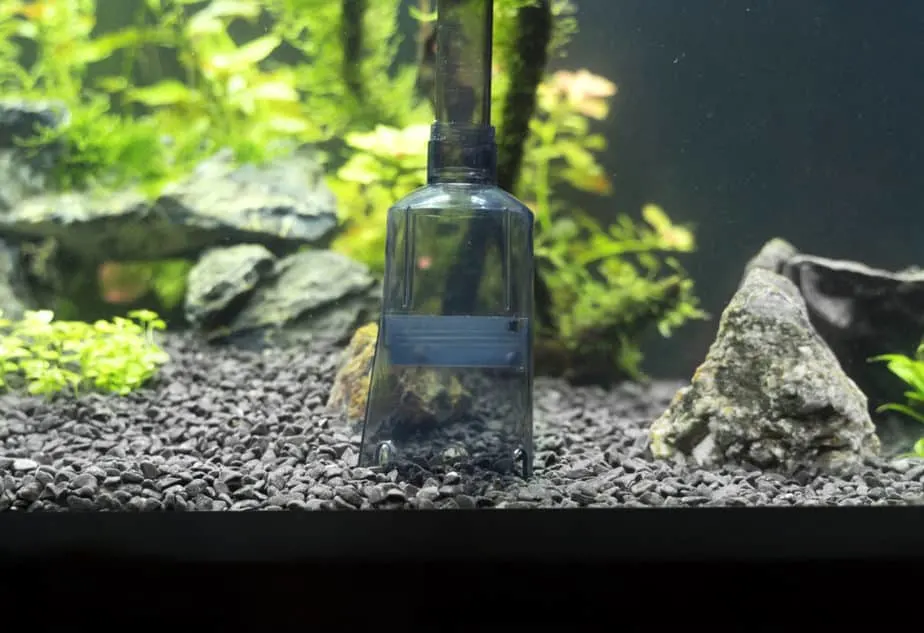
Also take this time to scrape any algae or dirt from your tank glass, substrate, or decorations. You can also trim your plants and get rid of the trimmings. Really, planted tanks need weekly changing and cleaning. So keep this in mind each time you change the water in your tank!
4. Put Your Prepared Water Back in The Tank
Once the water and any debris is taken out, start putting the water back in your tank. You want to do this slowly and carefully. In addition, make sure that your new water is ready for your tank. This means it should be free of contaminants and of a similar temperature to your tank water.
The temperature of the water might not seem important for plant life. But, plants can actually go into shock when there are drastic temperature changes in a tank. So, don’t put unprepared water in your tank.
Instead, put the correct temperature water back in slowly, and fill your tank to an appropriate water level.
5. Put Fertilizer Into Your Planted Tank to Replace Nutrients
Since you are resetting the nutrient level in your tank during the water change, you will need to replace the nutrients that were taken out or used up. Use your preferred liquid fertilizer product and place it into the newly changed water.
How much fertilizer you use will depend on the number of plants you have, as well as, their nutritional needs. But many tank owners add in a fertilizer weekly.
Can You Do Larger Water Changes or More Frequent Water Changes?
I suggest doing a weekly water change for the health of your planted aquarium. Still, is it okay to do larger water changes? And is it okay to change the water more than once a week? In truth, larger water changes can actually be beneficial for your planted tank, especially if you have a lot of plants.
With bigger changes, you can replace the nutrients in your tank more effectively. And, when you opt for more frequent water changes, your tank plants will thrive even more. Especially if you have issues with algae or are establishing a new tank, you should consider doing tank changes twice or even three times a week.
Aquarium experts even recommend doing frequent changes when planted tanks are first established. This helps prevent breakouts of algae and other contaminants. It can also make your plants more sturdy as they mature!
Still, anytime you do a water change, be careful and mindful of your plants. You don’t want to change all the water in one sitting. Beneficial bacteria needs to be maintained in your water column after all. But frequent water changes in a planted aquarium can be helpful for your aquarium setup!
Additional Tips and Recommendations For Water Changes in a Planted Tank:
In this section, I’ll go over some last tips and recommendations for your planted tank water change. This way you are not left with any questions!
One big tip I would like to emphasize is plant moisture. While you are cleaning out your tank and taking out the water, you don’t want your plants to dry out. Try keeping a mist bottle on hand with clean treated water, and spray your plants if they look like they are drying out.
Another important thing to remember is to use a de-chlorinator if you are putting tap water into your tank. Tap water has a lot of dangerous compounds in it. In particular, you don’t want your pets or plants exposed to high levels of chlorine. So, buy a de-chlorinator for your aquarium water.
Lastly, keep watch over your plants and water quality. This will help you figure out whether you need to change more water in your tank or whether you need to do more frequent water changes.

